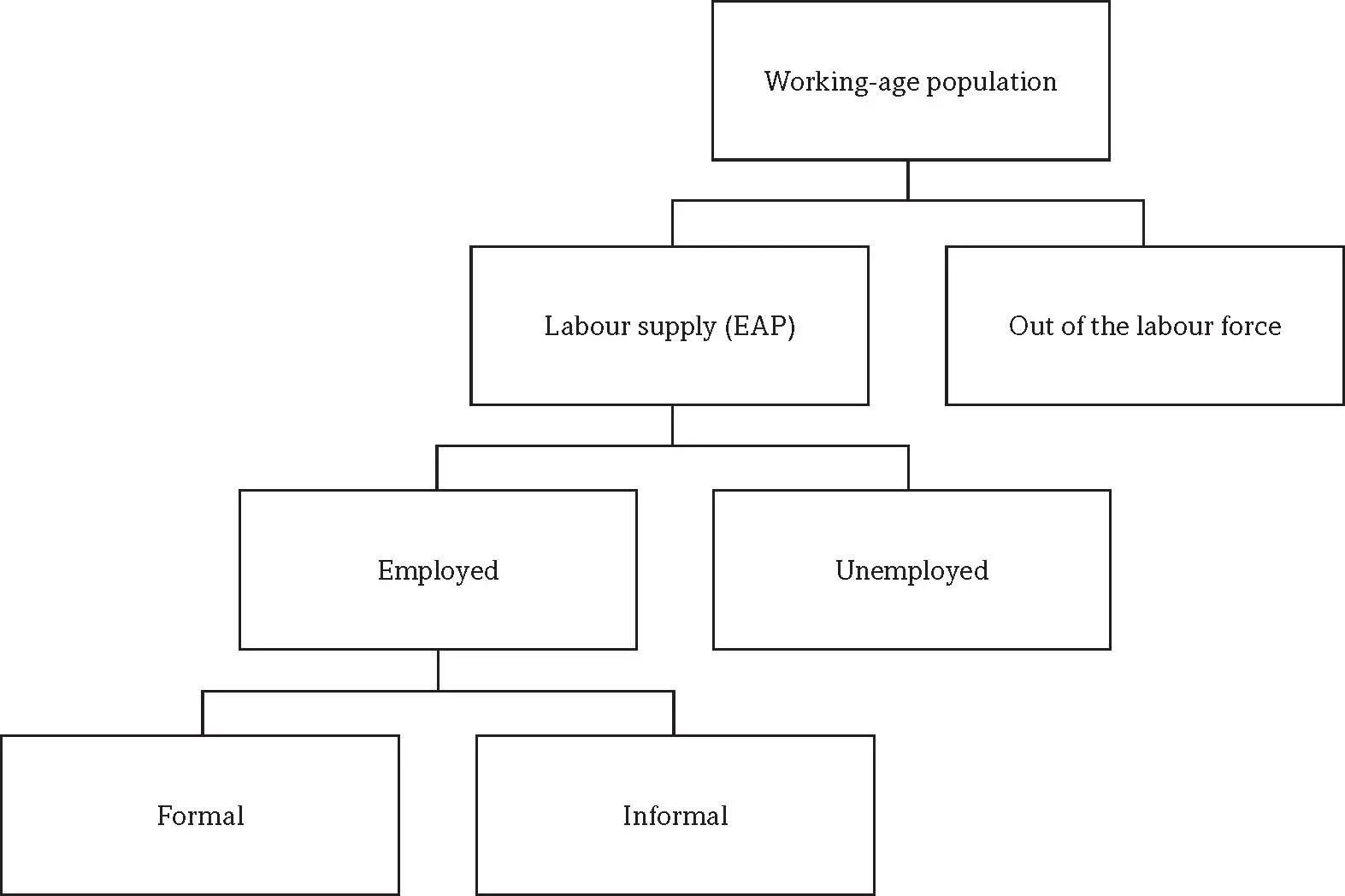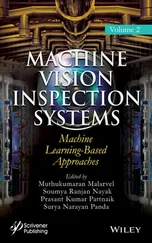Figure 2.1. Labour market structure

Source: Author’s elaboration.
2.2.2. Labour demand
In contrast, companies or establishments require “labour services” as an input to produce goods and services in the private and public sectors. Consequently, labour demand refers to the demand for workers (or hours of work) in an economy. This demand consists of the level of employment (satisfied labour demand) plus the number of available job vacancies, which equates to the labour required but not filled by an employee over a certain period of time (unsatisfied labour demand or unmet demand) (Farm 2003; Williams 2004).
In this sense, a job vacancy is defined as a “paid post that is newly created, unoccupied, or about to become vacant:
a) for which the employer is taking active steps and is prepared to take further steps to find a suitable candidate from outside the enterprise concerned; and
b) which the employer intends to fill either immediately or within a specific period” (Eurostat 2017).
Therefore, the total number of vacancies in an economy is determined by the number of unfilled job openings and, additionally, the number of jobs that are temporarily filled by internal substitutes (Farm 2003).
To summerize this subsection, the classic economic model (Cahuc, Carcillo, and Zylberberg 2014) describes the labour market in the following way: people (or households) offer a certain quantity of their “labour” at a certain labour price level (wages) in order to generate income and acquire different goods and services available in other markets. At the same time, establishments in this model require a certain quantity of “labour” at a certain labour price level (wages) to produce goods and services, and while some workers have a job and are employed, others are looking for one and are unemployed. Nevertheless, as shown in Figure 2.1, the fact that people are employed does not imply that they are working in regulated and good working conditions (e.g. informal economy).
2.2.3. Informal economy
To measure informal economy, the ILO (2003) recommends making a distinction between informal sector and informal employment. On the one hand, the informal sector is an enterprise-based definition, which considers people working in units that have “informal” characteristics regarding their unregistered and/or unincorporated legal status, small size, non-registration of their employees, lack of formal labour relations and bookkeeping practices, as well as under-payment/non-payment of taxes, among others. On the other hand, informal employment is a job-based definition and covers individuals whose main job lacks basic legal and social protections (or employment benefits); for example, lack of social protection, no income taxation, and so forth. It is necessary to clarify that none of these informal economy concepts refer directly to underground, illegal, and non-market production. These kinds of activities belong to illegal economy and (usually) are difficult to measure with standard labour market surveys such as household or sectoral surveys (Perry et al. 2007).
The above definitions of informal sector and informal employment highlight different aspects of an informal economy and can be used for various public policy objectives, such as payroll taxes, social protection, among others (ILO 2003). Consequently, it is possible that people work informally for enterprises that operate in the formal economy or workers might have formal jobs (e.g. with social security) in enterprises in the informal sector (see Figure 2.2).
Figure 2.2. Composition of informal economy

Source: Author’s elaboration.
Based on ILO recommendations, in national household surveys, countries like Colombia consider the following individuals to be informal workers: private employees and workers in establishments, businesses or companies that occupy up to five people (in all their agencies and branches), including the employer and/or partner; unpaid family workers; domestic employees; self-employed workers, except independent professionals, while government employees are excluded from this definition (Hussmanns 2004). Evidently, Colombia’s household surveys classify informal workers according to the concept of informal sector. 1As mentioned by Freije (2002), despite there is no consensus on how to measure informality, most of the researchers in Latin America rely on the firm size approach to measure this phenomenon. Indeed, the ILO (2019) reported that 13 out of 18 countries surveyed in Latin America 2include firm size as a criterion when defining the informal sector.
However, this way of measuring informality has some limitations. As mentioned above, informal employees may be formally working in large factories and, in consequence, the way in which Colombia measures informality might underestimate the phenomenon (ILO 2012). However, using a measure employed by the DANE to calculate informality via social security contributions (pensions) and firm size, Bernal (2009) found that—at least for the Colombian case—the size of the informal sector is remarkably similar between social security and firm size informality measurements. The same author found that workers who pay social security contributions (pension and/or health) are less likely to belong to small firms. In addition, the ILO (2011) studied 47 medium- and low-income countries and concluded that almost all workers employed by the informal sector are also in informal employment.
Another concern with the firm size criterion is that all self-employed workers might be considered as informal workers. According to monthly labour market figures released by the DANE, 3around 80% of self-employed workers and around 20% of salaried workers are informal. Consequently, the firm size informality definition tends to be correlated with self-employment, but the relation is not one to one. Additionally, for 14 Latin American countries, 4Perry et al. (2007) demonstrated that firm size (among other variables, like low educational attainment) are strongly correlated with characteristics of the informal economy such as lack of social protection. These results suggest that criteria based on firm size (in the informal sector) are a suitable approach to calculate informality rates, at least for the Colombian case.
Thus, this document uses the informality definition based on firm size because: 1) the results in Colombia (and in Latin America) suggest that this definition is an appropriate approach to measure informality; 2) the Colombian government adopted this definition as an official statistic to measure informality; and 3) one of the primary purposes of this book is to compare official labour market statistics with vacancy data to test the representativeness of job portals (see Chapter 8).
The magnitude of the informal economy problem depends on different processes. On one side, there is an “exclusion” process. More specifically, workers and companies would prefer formal jobs with benefits mandated by the State; however, some barriers restrict agents’ access to the formal economy. These restrictions or barriers can take different forms, such as excessive taxation or lack of certain worker characteristics (e.g. skills), that make it difficult to enter the formal economy. This framework suggests that informal firms and workers are a disadvantaged group.
On the other side, some workers and firms voluntarily choose to remain in the informal economy, based on their preferences for work and the net benefit of being in the informal versus formal economy. In order to belong to the formal economy, workers and firms need to incur certain costs, such as tax revenue, health, and work insurance, and, in return, the state must provide benefits, such as health care, access to credit, etc. However, these benefits might not compensate for the cost of formality (such as taxes). Thus, informal economy can be an “escape” for workers and firms to avoid the formal economy and its failures related to the provision of services (Perry et al. 2007). These facts highlight that the benefits of being in the formal economy are not enough to move some agents into this economy.
Читать дальше














